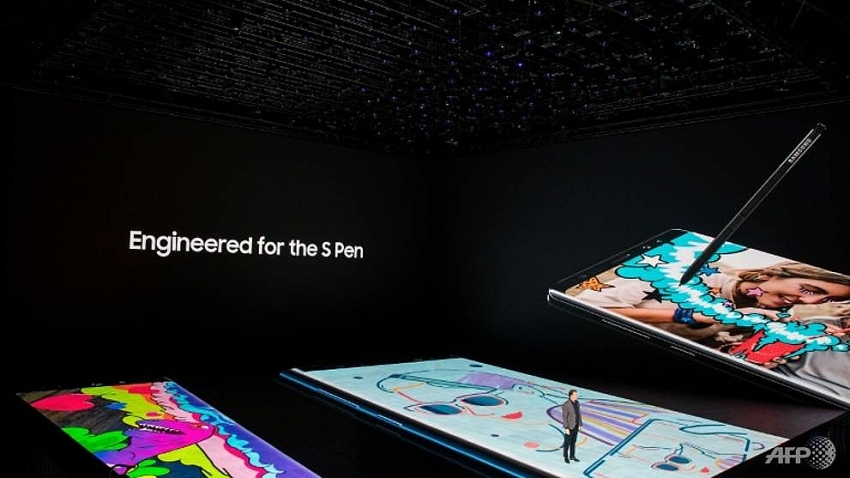Apple overtakes Samsung in shrinking smartphone market: survey
 |
| Apple overtook Samsung as the largest smartphone vendor in the fourth quarter but the South Korean giant maintained the top position for 2017 sales, according to research firm IDC AFP/Drew Angerer |
A survey by research firm IDC showed Apple - which reported its quarterly data Thursday - led all vendors with 77.3 million iPhones sold, giving it a 19.2 per cent market share.
Even though Apple's unit sales were down 1.3 per cent from a year earlier, it was able to move ahead of South Korea's Samsung, whose 74.1 million devices sold gave it a market share of 18.4 percent, IDC said.
Huawei held the number three position with a 10.2 per cent market share, followed by fellow Chinese makers Xiaomi and Oppo, with 7.0 and 6.8 percent, respectively, according to IDC.
Overall smartphone sales were down 6.3 per cent with 403.5 million handsets shipped, according to the survey.
IDC said the data showed consumers appeared in no rush to upgrade to the most expensive flagship smartphones from Apple and Samsung.
"The latest flock of posh flagships may have had consumers hitting the pause button in the holiday quarter," said Anthony Scarsella, an IDC research manager.
Scarsella said these high-end devices "proved to be more of a luxury than a necessity among upgraders."
IDC analyst Jitesh Ubrani said that as the top brands expanded their offerings, "brands outside the top five struggled to maintain momentum."
Samsung, which reported a 4.4 per cent decline in the fourth quarter, remained the top smartphone vendor for the full year with a 21.6 per cent market share, to Apple's 14.7 per cent, IDC said.
Overall smartphone sales for 2017 were virtually flat - down 0.1 per cent at 1.47 million units, the report said.
A separate survey from Strategy Analytics found similar market share for smartphone vendors but found a nine percent drop in fourth-quarter sales, described as the largest decline in the smartphone era.
"The shrinkage in global smartphone shipments was caused by a collapse in the huge China market, where demand fell 16 percent annually due to longer replacement rates, fewer operator subsidies and a general lack of wow models," said Linda Sui of Strategy Analytics.
What the stars mean:
★ Poor ★ ★ Promising ★★★ Good ★★★★ Very good ★★★★★ Exceptional
Related Contents
Latest News
More News
- Businesses ramp up production as year-end orders surge (December 30, 2025 | 10:05)
- Vietjet chairwoman awarded Labour Hero title (December 29, 2025 | 13:06)
- How to unlock ESG value through green innovation (December 29, 2025 | 10:03)
- AI reshapes media and advertising industry (December 29, 2025 | 08:33)
- FPT and GELEX sign deal to develop blockchain tech for global markets (December 29, 2025 | 08:29)
- Vietnam’s GDP forecast to grow by 9 per cent in 2026 (December 29, 2025 | 08:29)
- Women entrepreneurs are key to Vietnam’s economic growth (December 29, 2025 | 08:00)
- Vietnam's top 500 value-creating enterprises announced (December 27, 2025 | 08:00)
- The PAN Group shaping a better future with ESG strategy (December 26, 2025 | 09:00)
- Masan Consumer officially lists on HSX, marking the next phase of value creation (December 25, 2025 | 13:20)

 Tag:
Tag:



















 Mobile Version
Mobile Version